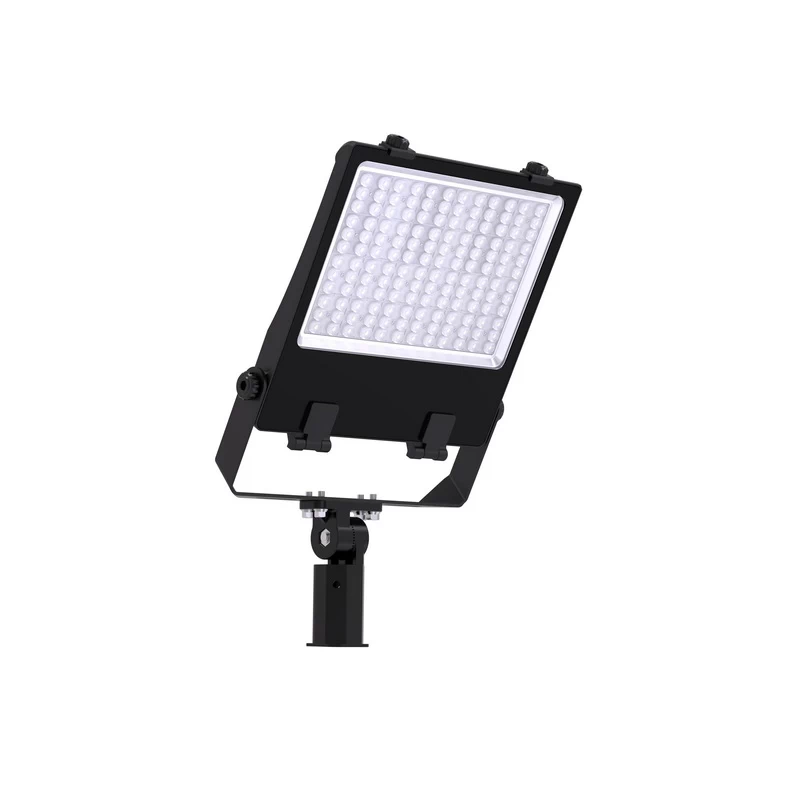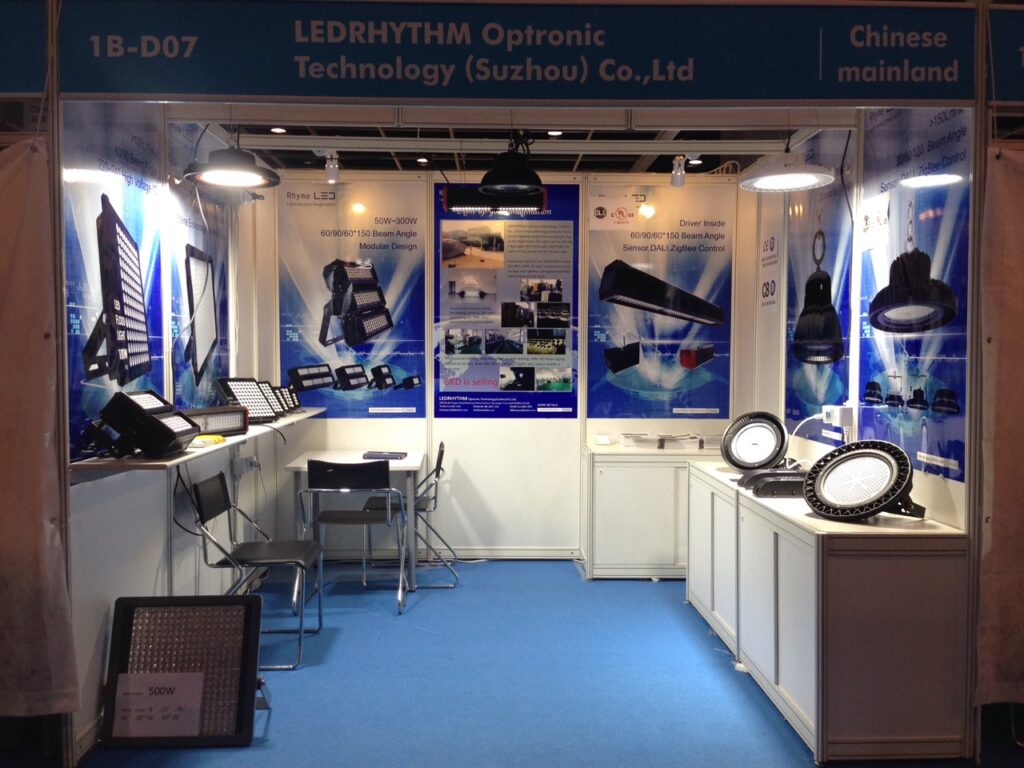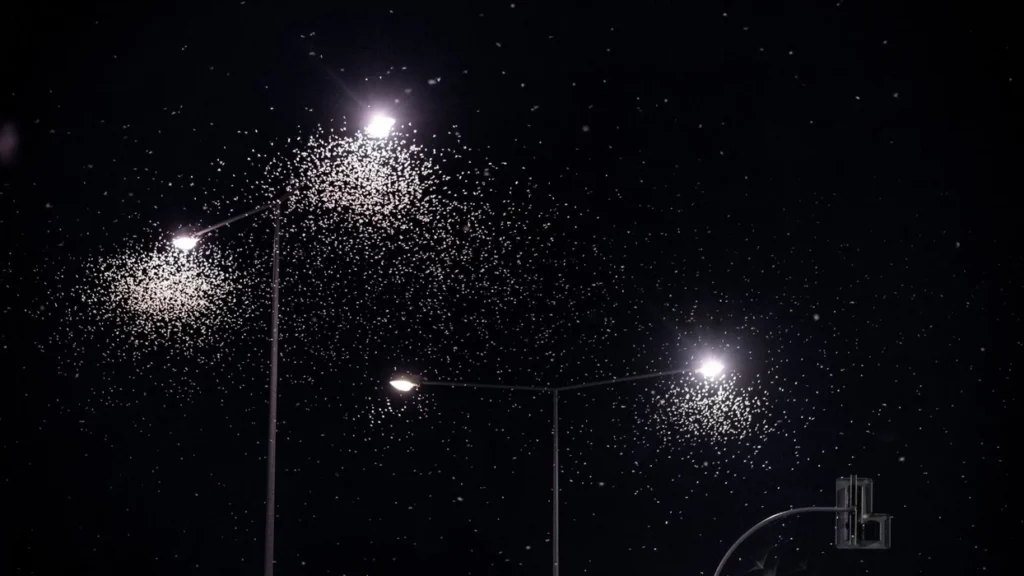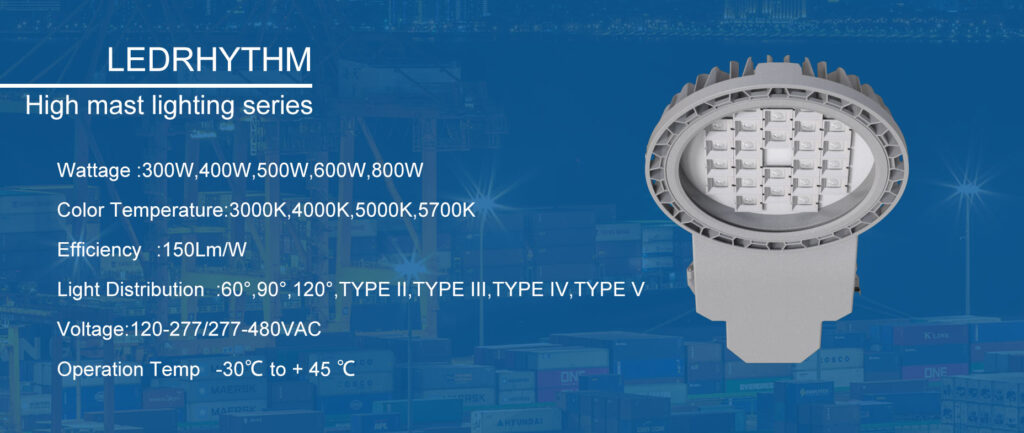Índice
ToggleIntroducción
Los proyectores y los focos LED sirven para fines distintos en aplicaciones de iluminación. Las luces de inundación emiten una luz suave y amplia, proporcionando una iluminación uniforme en grandes áreas, ya sea para la iluminación de techos altos o la iluminación de estadios. Por el contrario, los focos ofrecen un haz más brillante y concentrado, ideal para resaltar puntos específicos, como las luces de seguimiento de un escenario o los focos de un garaje. Este artículo analiza las diferencias, las aplicaciones y cómo elegir entre proyectores LED y focos.
¿Qué son los proyectores LED?
Las luces de inundación están diseñadas para cubrir un amplio rango de iluminación, proporcionando una luz suave y uniforme. Se utilizan principalmente para iluminar grandes áreas y suelen tener un ángulo de haz de entre 90° y 120°. Algunos ejemplos comunes son aparcamientos, estadios y fábricas.
Los proyectores, en cambio, tienen un rango de iluminación más estrecho y emiten una luz concentrada. Su ángulo de haz suele estar entre 15° y 45°, lo que los hace ideales para iluminación localizada, como obras de arte, iluminación de escenarios y linternas.
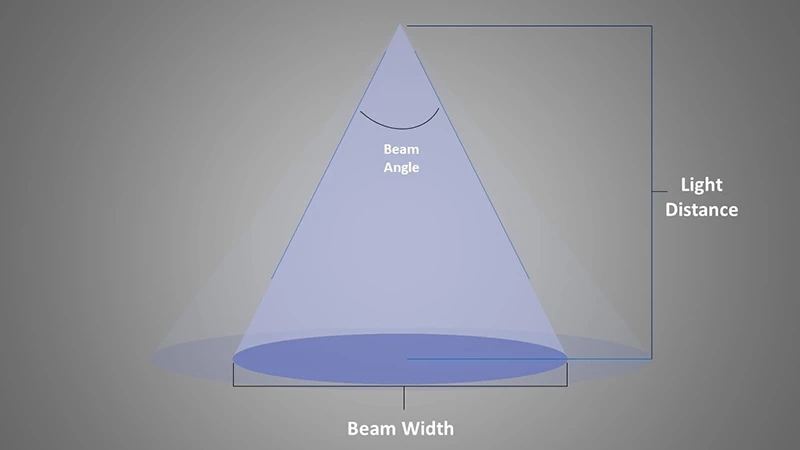
Foco proyector vs. Foco inundable
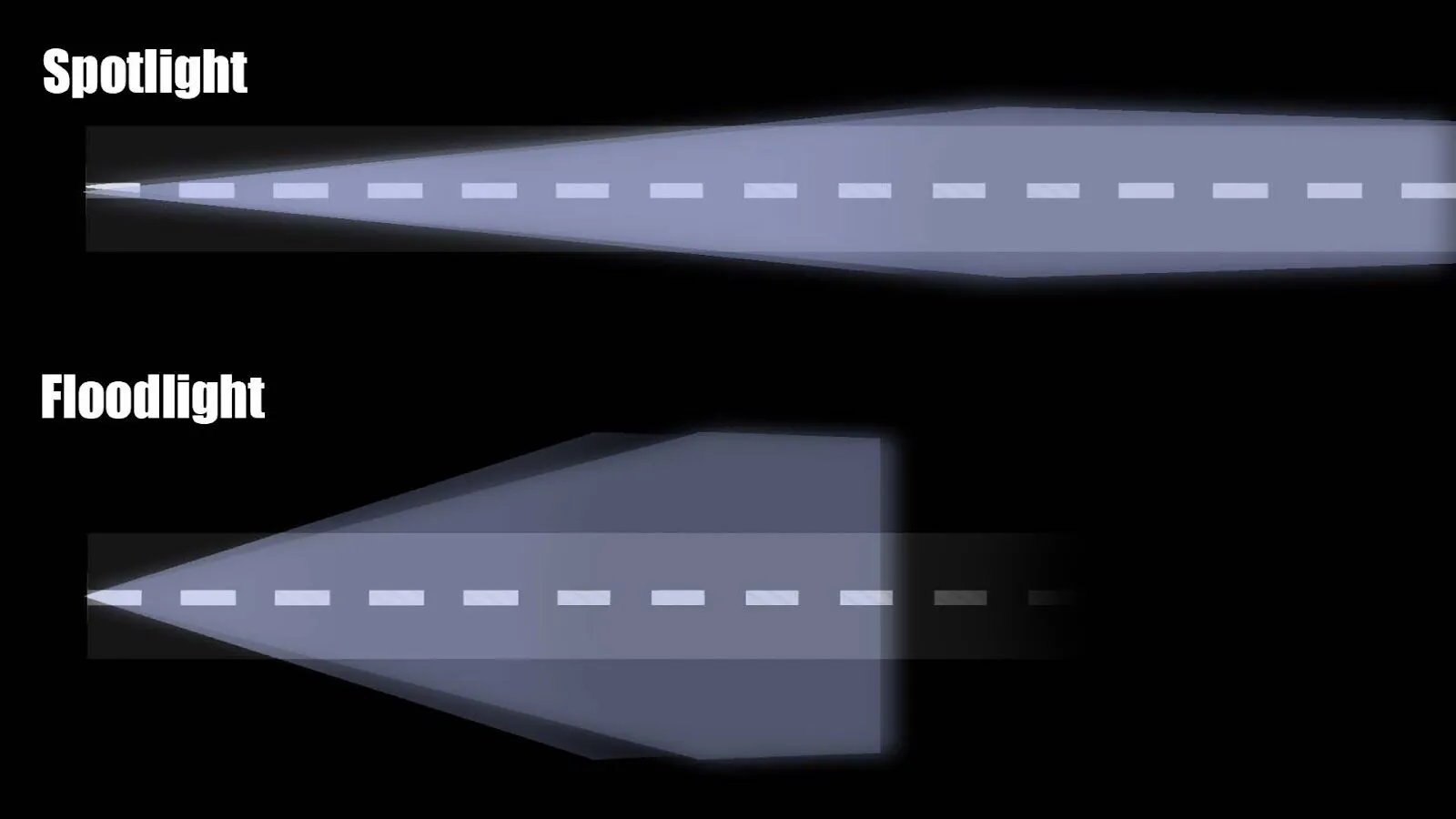 Características principales
Características principales
- Un ángulo de haz amplio y una cobertura uniforme son las principales características de los proyectores LED.
- Los proyectores LED se caracterizan por un ángulo de haz estrecho y una gran intensidad luminosa central.
- Los proyectores tienen ángulos de haz muy amplios, normalmente de 90° a 120° o más. Algunos proyectores gran angular pueden alcanzar incluso casi 180 grados.
- Los proyectores tienen ángulos de haz más estrechos, normalmente entre 10° y 45°. El ángulo del haz varía en función del uso previsto.
- Proyectores : Proporcionan una iluminación uniforme y sin sombras en una amplia zona. La distribución de la luz es amplia y suave, con límites difuminados y sin bordes de haz afilados.
- Focos : Focalizan la luz en una zona u objeto pequeño y específico, creando un fuerte contraste entre la luz y la oscuridad, resaltando el objeto iluminado. La luz es concentrada, con un área central muy brillante y un contorno del haz típicamente nítido.
- Proyectores : Las potencias van de decenas a kilovatios e incluso más, para satisfacer las necesidades de iluminación de grandes superficies. Vea nuestros 50W-2000W Serie de proyectores LED.
- Focos : La gama de potencias también es amplia, e incluso los focos de menor potencia (10-30 W) pueden proporcionar una iluminación muy alta dentro de la zona enfocada.
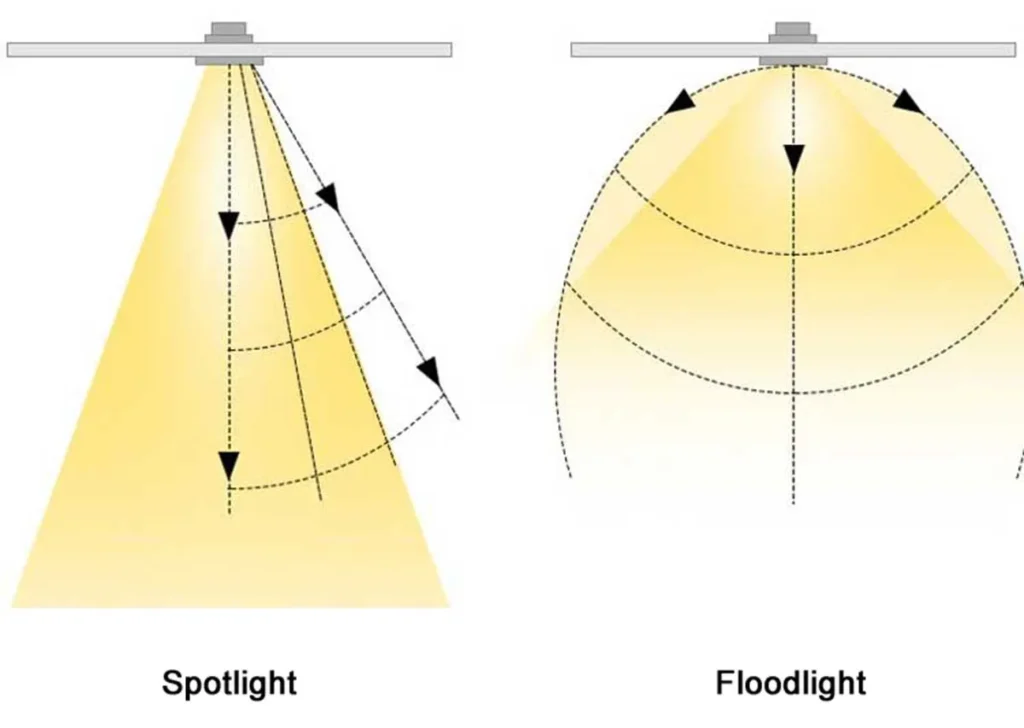
| Característica | Proyectores LED | Foco LED |
|---|---|---|
| Objetivo principal | Iluminación uniforme de grandes superficies | Iluminación focalizada para pequeñas áreas/objetos específicos |
| Ángulo del haz | Ancho (normalmente > 90°) | Estrecho (normalmente 10°-45°) |
| Distribución de la luz | Amplia, uniforme, suave, con bordes difuminados | Enfocado, intensidad central alta, bordes nítidos |
| Efecto | Toda la zona es luminosa, sin sombras ni contrastes evidentes. | La zona objetivo es muy luminosa, los alrededores más oscuros, alto contraste |
| Enfoque visual | La propia zona iluminada | Objetos o puntos resaltados dentro del área |
¿Todos los proyectores tienen ángulos de haz amplios?
Obviamente, no. Los proyectores modernos se pueden personalizar con una variedad de ángulos de haz, tales como 15°-120°, adecuado para iluminar diferentes áreas.
Los proyectores se utilizan para iluminar grandes superficies. Por ejemplo, los proyectores de campos de fútbol y aparcamientos utilizan ángulos de haz estrechos, pero se instalan a alturas de 15 m o incluso superiores para proporcionar una iluminación uniforme en una gran superficie.
Independientemente de si el ángulo del haz es de 15°, 30°, 45° o 60°, siempre que el propósito del diseño sea iluminar uniformemente una gran superficie, se denomina colectivamente proyector o proyector de ángulo estrecho.

¿Cómo elegir lámparas LED de inundación y focos?
La elección entre proyectores y focos depende de varios factores, como el ángulo del haz, la temperatura de color, el flujo luminoso, el CRI, el nivel de estanqueidad, la calidad general y la vida útil.
Como ya se ha mencionado, hay que elegir el proyector o foco correspondiente en función de los requisitos de iluminación de la escena real. Por ejemplo, los postes altos de exterior requieren proyectores con ángulos de haz estrechos.
A continuación se indican las opciones de proyectores recomendadas. Para más detalles, consulte cómo elegir el mejor proyector.
| Área de aplicación | Ángulo del haz | Rango de potencia |
|---|---|---|
| Plaza/Parking | 90°-120° | 100W-400W |
| Fábrica/almacén | 60°-90° | 100W-300W |
| Iluminación de fachadas | 120°-180° | 50W-200W |
| Estadio (campo de fútbol) | 25°-45° | 500W-2000W |
| Jardín/patio | 120°-180° | 50W-100W |
Recomendación de selección de focos :
| Área de aplicación | Ángulo del haz | Rango de potencia |
|---|---|---|
| Escaparates/Exposiciones | 10°-25° | 20W-50W |
| Pinturas/esculturas de interior | 15°-30° | 10W-30W |
| Árboles/esculturas paisajísticas (exteriores) | 25°-45° | 30W-100W |
| Seguidor de etapa | 5°-15° | 200W-1000W |
Diferencia entre foco y reflector Resumen
Los proyectores proporcionan una iluminación uniforme en una gran superficie, independientemente del ángulo del haz. Por ejemplo, un proyector con un ángulo de haz de 30° en un campo de fútbol. Las alturas de montaje más elevadas también pueden proporcionar una amplia cobertura.
Los focos enfocan y enfatizan un objetivo pequeño (una obra de arte, un árbol, un escenario), Pero no todas las luces con ángulos de haz estrechos son focos.Necesitan crear un fuerte contraste entre la luz y la oscuridad y un "punto" bien definido.
La gente también pregunta
¿Para qué sirven los proyectores?
Los proyectores son un tipo de aparato de iluminación que se utiliza para iluminar uniformemente grandes superficies. Se utilizan mucho en exteriores e industrias, como aparcamientos, estadios y almacenes. Proporcionan una luz suave y uniforme y una experiencia lumínica agradable.
¿Cuál es la diferencia entre haz concentrado y haz concentrado?
Los haces puntuales tienen un ángulo de haz estrecho (10°-30°), iluminando una larga distancia pero una zona estrecha. Sus aplicaciones incluyen la iluminación de escenarios, exposiciones y esculturas.
Los proyectores de haz extensivo tienen un ángulo de haz amplio (60°-120°), iluminando una zona amplia pero a menor distancia. Sus aplicaciones incluyen la iluminación de grandes áreas, como aparcamientos, plazas y patios.
¿Son todos los focos de ángulo de haz estrecho?
No. Aunque la característica más notable de un proyector es su estrecho ángulo de haz, el que se le llame "proyector" depende de su escenario de iluminación y de su finalidad.
¿Los proyectores suelen tener un ángulo de haz amplio?
Sí, los proyectores suelen tener ángulos de haz más amplios, como 60°, 90°, 120° y 150°.
Sin embargo, también existen proyectores de 15° y 30°, de gran potencia y diseñados específicamente para la iluminación de mástiles altos.

